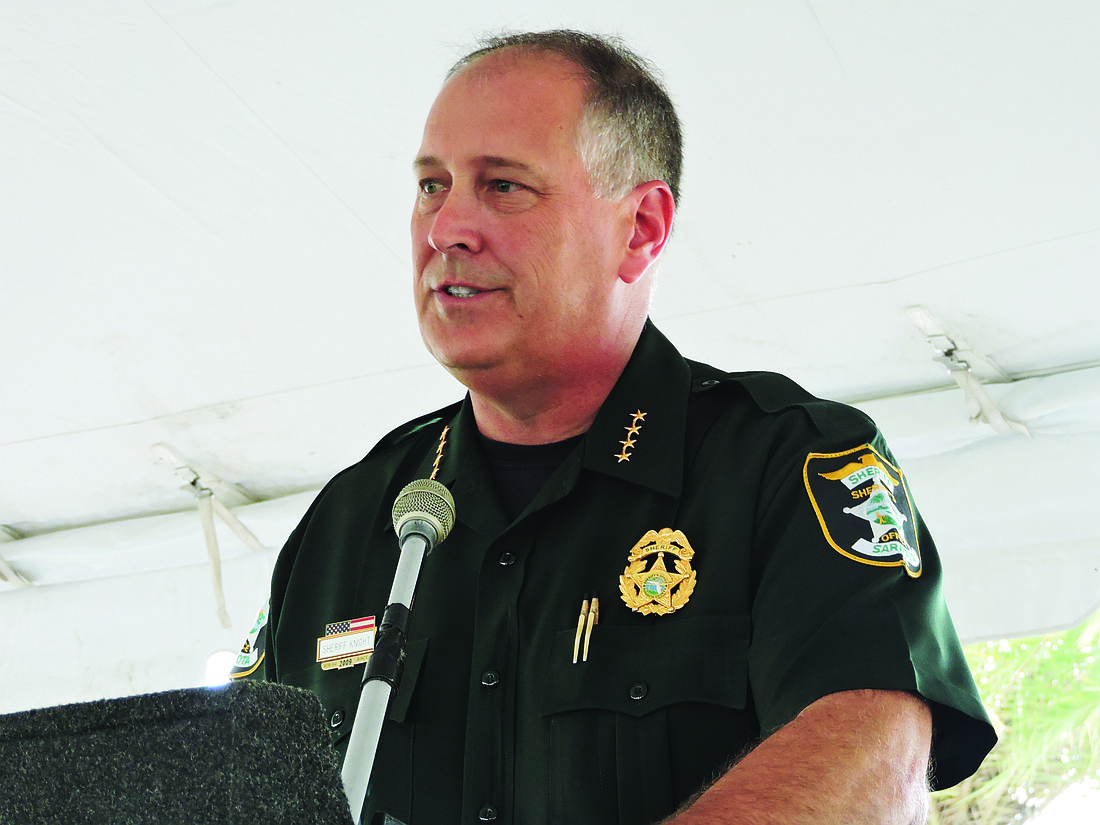- July 26, 2024
-
-
Loading

Loading

In less than a single student-grading period, Sarasota County Schools — prompted by a school shooting and new state rules on campus security, the whims of elected officials and other factors — went from budget business as usual to discussions on how to overcome a projected $3.1 million deficit.
Now, the school board is trying to revisit its plans for security in the coming years, while also trying to figure out how to pay for it next year and in years to come.
“We protected our students, but we short-cut ourselves and our budget in trying to do that because we did not have a plan and we rushed forward,” Board Member Caroline Zucker said.
The discussion will continue April 17 at a workshop at which school board members intend to discuss alternatives to options presented by Sarasota County Sheriff Tom Knight.
Ultimately, the biggest factor in the school district’s sudden budget upheaval is a new responsibility to not only take on additional security costs, funded in part by the state, but also costs previously borne by the Sarasota County Sheriff’s Office. Municipal police departments could follow suit, pending contract negotiations.
Under new school safety legislation, enacted weeks after the Feb. 14 mass shooting at Marjory Stoneman Douglas High in Parkland, the district is responsible for funding all school security measures.
The cost will add up to more than $5 million annually.
The district needs that amount to keep school resource officers at every high school, middle school and one elementary school, and add 24 new security officers for elementary schools. A portion of the $2.4 million in funding from the state must be split with charter schools. That won’t cover the whole cost, leaving a $3.1 million deficit if the district must foot the entire bill. The district’s total operating budget is about $460 million.
To fix it, administrators across the district have been working to identify ways to cut costs in their budgets.
School administrators received the district’s preliminary budget in late March, and had until this week to identify and submit areas to cut. The goal at each school was to cut 1% of its budget through things such as delaying projects or identifying things that could be funded with grants.
Superintendent Todd Bowden was hopeful to accumulate about $4 million in proposed cuts for the school board to prioritize and choose from.
Board members must consider the new safety and security requirements with the need to educate students at a level previously expected.
Zucker expects cuts won’t include personnel, and won’t affect the extra 30 minutes or arts and music education that voters were promised in March when they reapproved by a 79% margin an optional 1-mill property tax that adds $56 million to the district budget.
“We’ve done this before,” she said. “We must not lose our focus on the students. We must not. Everything we do has to be to the betterment of the students.”
The mass shooting in Parkland prompted a wave of activism and changes across the state that had real repercussions for Sarasota County Schools and school districts around Florida. Gov. Rick Scott responded with sweeping gun control reform. The district was suddenly required to have some form of security on all campuses — whether from school resource officers, other types of hired security officers or from training and arming existing school employees.
That news came March 9.
Less than two weeks later, Sheriff Tom Knight announced he would no longer split the cost of resource officers with the district. He cited Scott’s bill, the tax funding the district received from the optional tax and the extra security funding from the state. The city of Sarasota and the city of North Port followed suit, and contract negotiations are pending.
Additionally, in the days following the new legislation, letters between Knight and Bowden pressured the school district to make a quick decision about how it would approach security.
By April 3, the district was looking at a $3.1 million budget deficit, in the worst-case scenario.
“The Legislature nor the governor expected us to have a plan in place within a week of that bill being signed,” board member Shirley Brown said. “And I felt it was wrong to be pushed to a decision so quickly.”
In an effort to fully evaluate school security decisions, the school board will discuss at an April 17 workshop other options not presented by the sheriff. Among the options sanctioned by the security rules enacted by the state: training and arming non-teacher employees, or possibly creating an in-house security team.
The Sheriff’s Office, meanwhile, has announced it is recruiting 14 deputies at $23.50 an hour to serve in 12 elementary schools, starting next school year.
In a release, Knight said: “It has been our goal from day one to identify a practical and cost-effective solution for the school district. After ample research and internal review, we put together a program that is not only compliant with the new law, but will stand to benefit the district and its students ... The School Resource Deputy II Program is really a win-win for everyone.”
Brown isn’t so sure.
“I think we need to take a breath. We gotta look back and we gotta see what other districts are doing, because there’s no rush to this,” Brown said. “Look for a plan C. This is too much an important issue to be slinging things back and forth to each other.”